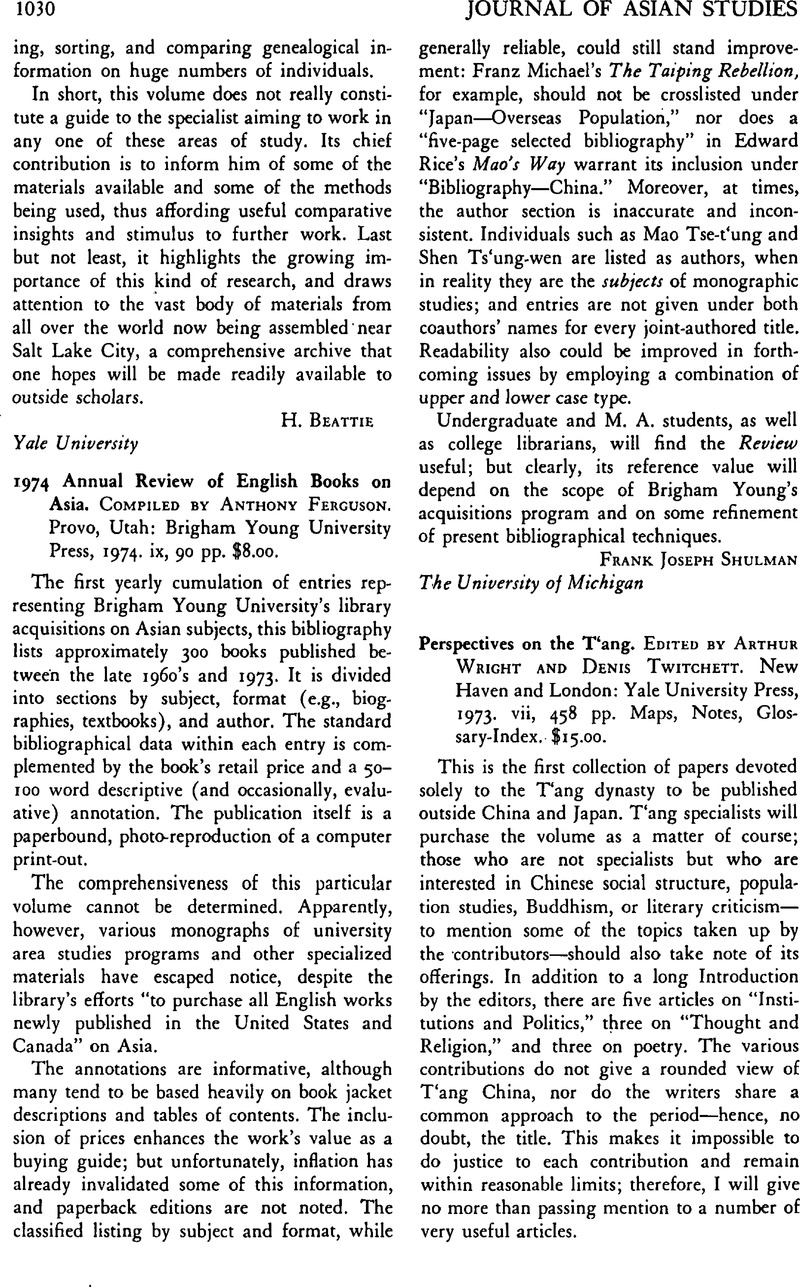No CrossRef data available.
Published online by Cambridge University Press: 23 March 2011

1 The most important of these are scattered in three collections of Tunhuang material: Peking (ms. number wei 79, unaccountably referred to throughout as wei 67), Paris (P. 3191), and London (S. 5861 and S. 2052—mistakenly called S. 2025 in the article).
2 It is worth noting Twitchett's addition, in brackets, of the words “other” and “locally prominent” to his translation of the comment on T'ang social structure by Shcn Kua. (p. 56) It is quite possible to take the final paragraph of Shen's text to refer to the T'ang elite as a whole, not merely a lower segment of it.
3 McMullen's citations on the backgrounds of these men are not entirely satisfactory, since he neglects some important sources: the genealogy of the Chaochün Li clan (in Hsin T'ang slut 72A) in the case of Li Hua, and the inscription for the Yen family temple (Chin shin ts'ni-pien 101.23b ff.) in the case of Yen Chen-ch'ing. There are some lapses elswhere: Kuo-shih pu (Shanghai, 1957), p. 20, which is cited in n. 9, says nothing about Li Hua's family; in n. 12, the reference in T'ang-jen hang-ti lu should read “pp. 381–89,” not “p. 361”; n. 6 cites CTS when HTS is intended; and one would like to know just which texts McMullen is referring to when he mentions Tu-ku Chi's “writings for relatives” on p. 309.
4 Wright bases this hypothesis on the defense of Buddhism by three officials linked to Li Shih-min. But the only evidence he cites to connect two of the three—Hsiao Yü and Li Shih-cheng—to pro-Buddhist actions at this time is Fo-tsu t'ung-chi, a late 13th c. religious history which, as Wright notes, “is too late a work to merit full confidence.” (Incidentally, the text cited as Yü Shih-nan's preface to Fa-lin's Po hsieh lun seems rather to be a preface to Fa-lin's Collected Worlds, and is so titled in T 52.474.)
5 It is not clear just how Weinstein decided that a particular sect was “prominent” or “in eclipse.” Prominence must mean something more than imperial patronage, or else the argument is circular; but just what the indicators of prominence are, we do not learn.